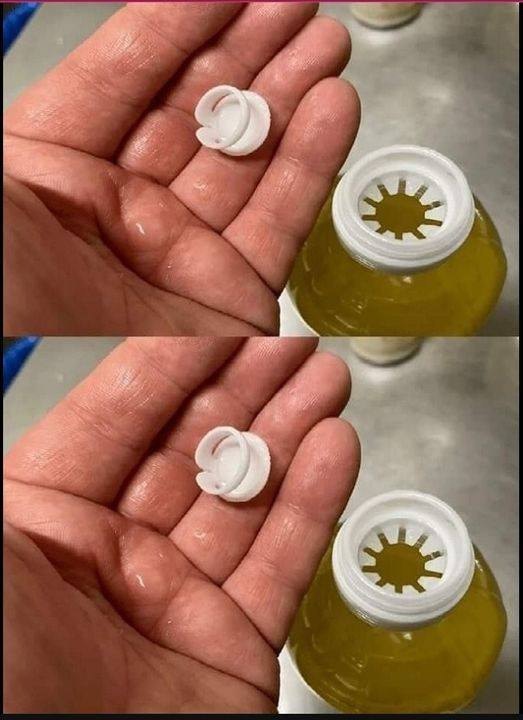ADVERTISEMENT
**The Hidden Purpose of the Oil Cap: What You Never Knew**
For years, many of us have been tossing away the oil cap that comes with a new bottle of cooking oil without giving it much thought. It’s a small, often inconspicuous part of the bottle, tucked away under the cap, and for most people, it seems entirely unnecessary. But one day, a colleague explained to me what the oil cap is truly used for, and it completely changed the way I viewed this seemingly insignificant piece of packaging.
In this article, we will explore the secret behind the oil cap, why it’s included in cooking oil packaging, how it can be beneficial, and the many ways it can help you preserve the quality of your cooking oil. Additionally, we’ll delve into the surprising benefits of understanding this simple yet functional design and how you can use it to enhance your cooking experience. By the end of this article, you’ll never look at the oil cap the same way again, and you might just stop throwing them away too!
—
### **What is an Oil Cap?**
To start, let’s first define what we mean by the “oil cap.” When you buy a bottle of cooking oil, such as olive oil, vegetable oil, or canola oil, the bottle typically comes with two main components: the screw-on lid or cap and a smaller, removable plastic or metal piece placed inside the neck of the bottle. This small cap is often seen as a piece of waste or filler, something that many people might remove and discard without even considering its purpose.
But as it turns out, this cap serves an essential function that enhances both the quality of your cooking oil and your cooking experience.
### **The Primary Purpose of the Oil Cap: Preservation of Freshness**
One of the primary reasons the oil cap is included is to help preserve the freshness of the oil. The oil cap is typically designed to reduce exposure to oxygen and light, which can both cause cooking oils to deteriorate. Oxidation, the process that occurs when oils are exposed to oxygen, leads to the breakdown of the oil’s compounds, resulting in a rancid or unpleasant taste. Additionally, exposure to light accelerates this degradation process, which is why cooking oils are often sold in dark-colored bottles.
The oil cap plays a critical role in minimizing these exposures. By creating a seal that prevents air from entering the bottle, it helps keep the oil fresh for a longer period. This means that your oil will stay in better condition, ensuring you enjoy the highest quality flavor when using it for cooking.
### **How the Oil Cap Helps You Control the Flow of Oil**
Another crucial function of the oil cap is to regulate the flow of oil as it’s dispensed from the bottle. Many oil bottles come with a narrow opening that allows only a small amount of oil to pour out at a time. The cap, which often includes a small, perforated opening, ensures that only a controlled amount of oil is released when you tilt the bottle.
This flow control is particularly useful when measuring out oil for recipes or drizzling oil over a dish. It helps you avoid wasting oil, as the smaller opening prevents large amounts of oil from spilling out uncontrollably. By using the cap to control the flow, you can save money by using only the amount of oil you need, and you can also reduce unnecessary calorie consumption by preventing overuse of oil in cooking.
For Complete Cooking STEPS Please Head On Over To Next Page Or Open button (>) and don’t forget to SHARE with your Facebook friends
